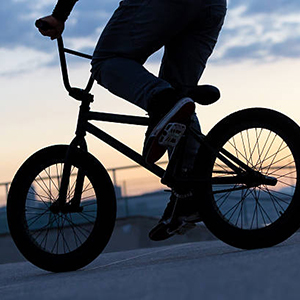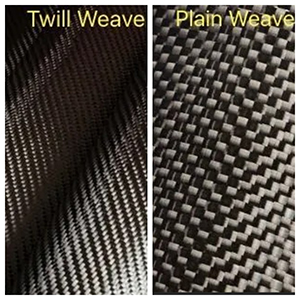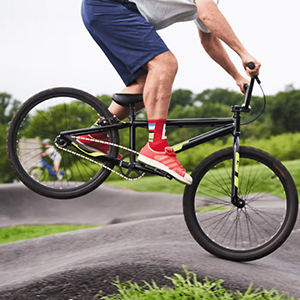
Toray T700 vs T800 Carbon BMX Rims Which One Delivers Superior Performance
Carbon fiber has become a game-changer in BMX rim performance. Its combination of strength and light weight allows riders to push their limits while maintaining control. Choosing the right carbon fiber can make a noticeable difference in acceleration, handling, and overall ride feel.
Toray T700 and T800 are two of the most popular high-performance options on the market. Both are used by professional BMX riders, but they have unique characteristics that can influence your riding style.
When selecting a carbon BMX rim, consider:
Strength: How well the rim handles impacts and tricks.
Stiffness: How efficiently your pedal power transfers to the wheels.
Weight: Lighter rims make acceleration and maneuvering easier.
Durability: How the rim holds up under repeated use.
Ride feel: The balance between responsiveness and flexibility.
Did you know that over 70% of competitive BMX riders now rely on high-modulus carbon rims for racing and freestyle? Choosing the right rim can give you an edge whether you’re sprinting on the track, jumping in a dirt course, or practicing tricks at your local BMX park.

What Is Toray T700 vs T800
Toray T700 and T800 are two widely used types of carbon fiber in carbon fiber BMX rims.
T700 Carbon Fiber is known for its balanced strength and flexibility. It offers reliable performance while remaining cost-effective, making it a popular choice for freestyle riders and all-around BMX setups.
T800 Carbon Fiber has a higher modulus and stiffer structure, giving it greater strength and lighter potential. It is often preferred in racing or high-performance BMX setups where stiffness and responsiveness are critical.
Once you understand these basic characteristics, it’s easier to see the differences in key material properties:
|
Property |
Toray T700 |
Toray T800 |
|
Strength & Flexibility |
Balanced strength, flexible |
Higher modulus, stiffer |
|
Tensile Strength |
~4,900 MPa |
~5,880 MPa |
|
Tensile Modulus |
~240 GPa |
~294 GPa |
|
Density |
~1.80 g/cm³ |
~1.81 g/cm³ |
|
Typical BMX Applications |
Freestyle, all-around, cost-effective |
Racing, high-performance, lightweight priority |

Key Features and Differences of T700 vs T800
When deciding between T700 and T800 carbon BMX rims, it helps to have a quick overview of their main features. This section summarizes the key differences without diving too deeply into real-world testing.
Quick Comparison Table
|
Feature |
Toray T700 |
Toray T800 |
|
Strength |
Balanced, reliable for tricks and general use |
Higher, ideal for racing and high-performance setups |
|
Stiffness |
Moderate, allows some flex |
Stiffer, maximizes energy transfer |
|
Weight |
Slightly heavier than T800 |
Lighter potential for performance advantage |
|
Durability |
Excellent for freestyle and repeated impacts |
Very durable under stress, optimized for racing |
|
Cost |
More budget-friendly |
Premium price for high-end performance |
|
Ride Feel |
Slightly flexible, forgiving on landings |
Responsive and precise, less forgiving on rough landings |
Real-World Performance Metrics
Understanding the theory behind T700 and T800 is one thing, but seeing how they perform in real BMX riding scenarios is just as important.
Quantitative Stiffness & Weight Analysis
T800 rims resist side-to-side flex better than T700, providing precise handling during sprints and sharp turns. Their higher torsional rigidity also ensures that your pedal power transfers more efficiently. While T700 rims are slightly heavier, this added flexibility can help absorb shocks and landings, giving a more forgiving ride. In contrast, the lighter T800 rims improve acceleration and make your bike feel more agile on the track.
Here is a rim test from Top-Fire. If you need more information, please contact us.
Aerodynamics & Riding Efficiency
Efficient energy transfer and reduced air resistance are crucial for BMX performance, especially in racing or high-speed street riding.
Rim Stiffness and Profile
The stiffness and shape of your BMX rim directly influence how your energy is transmitted to the wheel. T800 rims, being stiffer, ensure that more of your pedal force is converted into forward motion, minimizing energy loss. The rim profile also plays a role in slicing through the air; a well-designed aerodynamic profile reduces drag, letting you maintain speed with less effort. T700 rims, while slightly more flexible, offer a balance between comfort and efficiency, which can be helpful in freestyle or technical riding where maneuverability matters.
Weight and Rolling Resistance
Lighter rims reduce rotational mass, which improves acceleration and makes the bike easier to handle. T800 rims typically have the advantage here, giving you quicker sprints and more responsive handling. Rolling resistance—the friction between the tires and the ground—is also affected by rim stiffness. T800 rims keep the wheel shape consistent under load, helping maintain smooth rolling efficiency. T700 rims flex slightly under load, which can increase rolling resistance but adds a forgiving touch on rough terrain.
Impact on Riding Performance
Aerodynamic efficiency and weight affect top speed, acceleration, and handling. With T800 rims, you may notice faster acceleration out of corners and better performance on long straights. T700 rims provide slightly softer feedback, which can be beneficial for tricks and street-style riding where energy transfer isn’t purely linear. Understanding these differences helps you choose rims that suit your riding style, whether you’re competing, cruising, or performing freestyle maneuvers.
Which Carbon Fiber Is Right for Your Carbon BMX Rims Setup?
Choosing between T700 and T800 depends largely on your riding style, goals, and budget. Understanding the strengths of each can help you make a smarter decision for your BMX setup.
Racing
If you focus on racing or competitive BMX, T800 is the preferred choice. Its high stiffness and lighter weight allow for rapid response and efficient energy transfer, which can give you an edge on the track. The responsiveness of T800 rims ensures you can accelerate quickly out of corners and maintain top speed with minimal effort.
Freestyle and Street Riding
For freestyle tricks or street riding, T700 offers a balance of durability and impact absorption. Its slight flexibility helps reduce stress on the rim during jumps, drops, and technical maneuvers, making it more forgiving for freestyle setups. This makes T700 rims ideal for riders who prioritize control and resilience over pure speed.

Conclusion
Choosing the right carbon fiber for your BMX rims comes down to understanding the core differences between T700 and T800. T700 offers balanced strength, impact absorption, and cost-effectiveness, making it ideal for freestyle or street riding. T800 provides higher stiffness, lighter weight, and rapid response, which is perfect for racing or high-performance setups.
Your riding style and priorities should guide your choice. Beginners or riders focusing on tricks may benefit more from T700’s forgiving nature, while competitive racers might prefer T800’s precision and efficiency. For those who want versatility, a mixed setup can deliver a balance between flexibility and stiffness.
Before making a decision, evaluate your personal needs, budget, and experience level. Consider checking rider testimonials or exploring top BMX rim models to see how different carbon fibers perform in real-world conditions. Choosing the right material ensures your BMX rims match your riding goals and give you the best experience on the track or in the park.